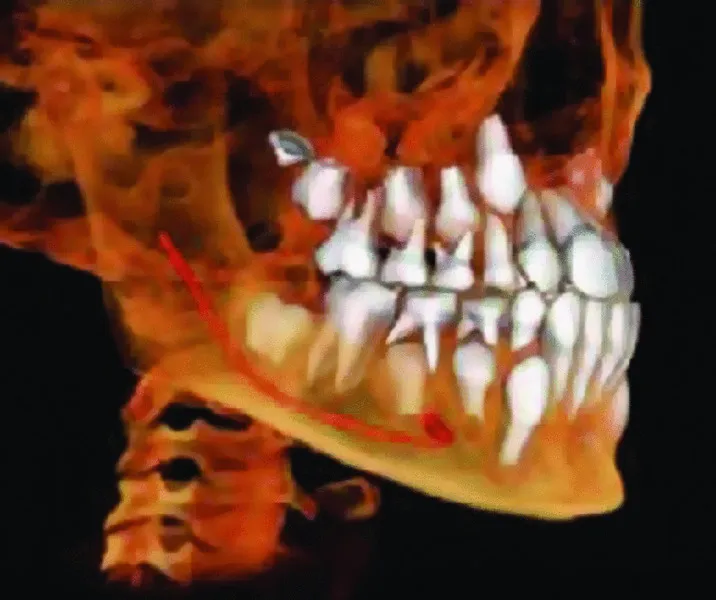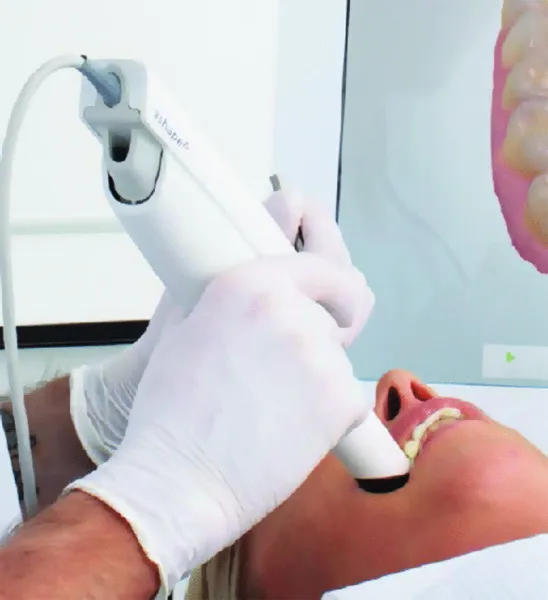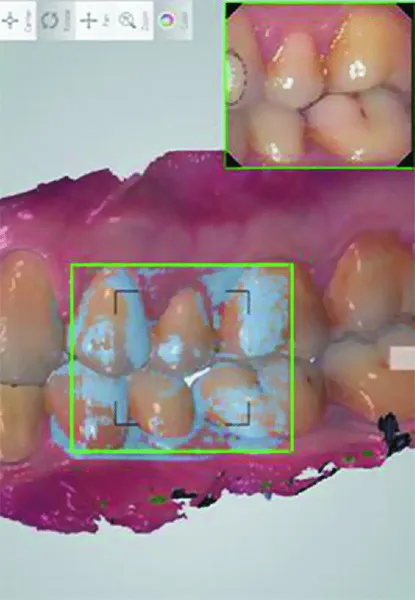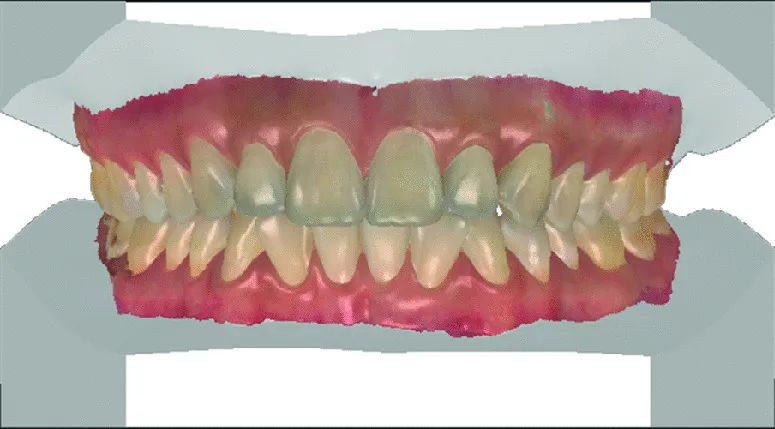
eBook - ePub
Digital Planning and Custom Orthodontic Treatment
K. Hero Breuning, Chung H. Kau, K. Hero Breuning, Chung H. Kau
This is a test
- English
- ePUB (disponibile sull'app)
- Disponibile su iOS e Android
eBook - ePub
Digital Planning and Custom Orthodontic Treatment
K. Hero Breuning, Chung H. Kau, K. Hero Breuning, Chung H. Kau
Dettagli del libro
Anteprima del libro
Indice dei contenuti
Citazioni
Informazioni sul libro
Digital Planning and Custom Orthodontic Treatment offers a thorough overview of digital treatment planning as it relates to custom orthodontic treatment.
- Covers 3D imaging of the dentition and the face with intraoral scanners, CBCT machines, and 3D facial scanners
- Provides a complete guide to using digital treatment planning to improve the predictability, efficiency, and efficacy of orthodontic treatment
- Discusses CAD/CAM fabrication of appliances and the monitoring of treatment progress and stability
- Offers detailed descriptions for the main commercial systems on the market
- Presents clinically oriented information to aid in yielding high quality and stable results
Domande frequenti
Come faccio ad annullare l'abbonamento?
È semplicissimo: basta accedere alla sezione Account nelle Impostazioni e cliccare su "Annulla abbonamento". Dopo la cancellazione, l'abbonamento rimarrà attivo per il periodo rimanente già pagato. Per maggiori informazioni, clicca qui
È possibile scaricare libri? Se sì, come?
Al momento è possibile scaricare tramite l'app tutti i nostri libri ePub mobile-friendly. Anche la maggior parte dei nostri PDF è scaricabile e stiamo lavorando per rendere disponibile quanto prima il download di tutti gli altri file. Per maggiori informazioni, clicca qui
Che differenza c'è tra i piani?
Entrambi i piani ti danno accesso illimitato alla libreria e a tutte le funzionalità di Perlego. Le uniche differenze sono il prezzo e il periodo di abbonamento: con il piano annuale risparmierai circa il 30% rispetto a 12 rate con quello mensile.
Cos'è Perlego?
Perlego è un servizio di abbonamento a testi accademici, che ti permette di accedere a un'intera libreria online a un prezzo inferiore rispetto a quello che pagheresti per acquistare un singolo libro al mese. Con oltre 1 milione di testi suddivisi in più di 1.000 categorie, troverai sicuramente ciò che fa per te! Per maggiori informazioni, clicca qui.
Perlego supporta la sintesi vocale?
Cerca l'icona Sintesi vocale nel prossimo libro che leggerai per verificare se è possibile riprodurre l'audio. Questo strumento permette di leggere il testo a voce alta, evidenziandolo man mano che la lettura procede. Puoi aumentare o diminuire la velocità della sintesi vocale, oppure sospendere la riproduzione. Per maggiori informazioni, clicca qui.
Digital Planning and Custom Orthodontic Treatment è disponibile online in formato PDF/ePub?
Sì, puoi accedere a Digital Planning and Custom Orthodontic Treatment di K. Hero Breuning, Chung H. Kau, K. Hero Breuning, Chung H. Kau in formato PDF e/o ePub, così come ad altri libri molto apprezzati nelle sezioni relative a Medicine e Orthodontics. Scopri oltre 1 milione di libri disponibili nel nostro catalogo.
Informazioni
1
Documentation of the Dentition
K. Hero Breuning
Introduction
There is a growing demand for innovative ways to record the dentition and craniofacial complex. New technologies rely heavily on sophisticated tools and software to accurately capture the dentition. However, in order that these technologies are routinely used in a mainstream practice, a completely digital, highly accurate, and easily portable system needs to be established to create a worldwide information portal. A complete digital workflow will ensure that the appliances delivered are accurate and will be delivered efficiently to the consumer all over the world. Another more important benefit is that if appliances could be digitally built it would promise to reduce cost as the process would require less manual processing, and the transportation time and costs would not delay the fabrication process. It is this drive to create custom lab work that is fueling the next big game changer in orthodontics. The accurate representation of the dentition is by far the most important step to successful orthodontics. Traditional plaster casts are now slowly being replaced by digital models in orthodontics [1]. These digital models are often obtained via an indirect method that requires the transport of plaster casts or impressions of the dentition to a specialized company for laser or computer tomography (CT) scanning [2–5]. It is a known fact that the process of making plaster casts from dental impression materials such as alginate and polyvinyl siloxane (PVS) impression material has always some degree of dimensional change. During transportation and the period between the impression procedure and the pouring of plaster in the impression, the dimensions of the impression and thus the accuracy of the plaster model can change. Impressions have to be sterilized, transported to a dental lab, and, after fabrication of the plaster models, transported again to the orthodontic office. Plaster dental models have then to be stored in the dental office and retrieved during orthodontic treatment and are prone to fracture. Plaster models and also dental impressions can be scanned with desktop scanners with laser beams and with dedicated CT scanners to transform these models and impressions into digital dental models (Figure 1.1).

Figure 1.1 A dental model scanner.
Company: 3Shape.
Company: 3Shape.
In the literature it is reported that the accuracy of digital dental models scanned directly from impressions when compared to the “golden standard, the plaster cast” is sufficient for orthodontic analysis and treatment planning. But for this method to get a digital dental model an impression or a plaster model is required. As the impression taking procedure and the fabrication of plaster casts is an indirect method to get digital dental models, there is interest in the use of a direct method to copy the dentition.
A direct method to capture the dentition is by using the cone beam computer tomography (CBCT) radiographs [6]. These radiographs can be used for dental analysis, but CBCT involves exposing the patient to radiation, and the quality of the dentition on the CBCT radiograph is directly related to the radiation dose used (Figure 1.2). Because of the ALARA principle (a radiation dose As Low As Reasonably Achievable), CBCT is not indicated for imaging of the dentition only.

Figure 1.2 The segmented dentition on a CBCT radiograph.
Company: Anatomage Inc.
Company: Anatomage Inc.
To answer the need for a digital yet economical solution to physical impression materials, several companies have developed intraoral scanning systems to acquire digital intraoral impressions for any type of dental manufacturing. (For more information on the information presented in this chapter, please visit the websites of the companies mentioned.) Only intraoral scanning systems that can scan the entire dental arch can be used to replace orthodontic impression taking. The files of the scanners (stereolithographic (STL) files) can be used to produce digital dental models (Figure 1.3). These digital models can then be used with dedicated software for the diagnosis of a malocclusion, analyzing the dentition, digital treatment planning, and the design of dental, orthodontic, and surgical appliances. During the last decade, several intraoral scanners have been introduced. The first scanners introduced for intraoral scanning had some disadvantages, such as the need for powdering the dentition, a slow scanning speed, and a relative large and heavy scanning head [7]. Intraoral scanners have recently come to the technology forefront in dentistry as the new holy grail, with the promise to eliminate the dreaded physical impression. If successfully adopted this is sure to be the next trend. Of course, at the end of the day, it will legitimately only be adopted if dentistry can be made easier, faster, and more precise.

Figure 1.3 An intraoral scanner.
Company: 3Shape.
Company: 3Shape.
It is easy with the intraoral scanners to scan the interarch relationship. Registration of the occlusion with an intraoral scanner does not require a separate material for bite registration. The occlusion can be quickly, directly, and accurately captured with the intraoral scanner (Figure 1.4). If intraoral scanners are used, the digital dental models are immediately available for diagnosis and analyzing a malocclusion.

Figure 1.4 Scan of the occlusion.
Company: 3Shape.
Company: 3Shape.
Digital workflow using intraoral scanners
The images of the scanner (some scanners can be used to make a scan, color photographs, and an HD video taken at the same time) have the advantage that they can replace traditional plaster models (Figure 1.5) as well as photography of the dentition (Figure 1.6). Because intraoral scanning is a direct procedure, the intraoral scanning procedure could eventually become more accurate than traditional impression taking as intraoral scanning is not prone to some of the errors that can occur in the traditional impression taking procedure such as air bubbles, rupture of impression material, inaccurate impression tray dimensions, too much or too little impression material, inappropriate adhesion of the impression to the impression tray, and impression material distortion due to the disinfection and transportation procedure.

Figure 1.5 A digital dental model scanned with a color scanner.
Company: 3Shape.
Company: 3Shape.

Figure 1.6 A intraoral scan in color.
Company: 3Shape.
Company: 3Shape.
Inaccurate scanning can be improved by rescanning a specific part of the impression, so the procedure to entirely retake an impression can be postponed. Intraoral scanning could be particularly advantageous for patients with anxiety during impression taking (especially for the upper impression) and for cleft palate patients who could carry an increased risk of impression material aspiration and for whom standard impression trays are not suitable. Intraoral scanning could also be an advantage for patients currently undergoing orthodontic treatment with fixed appliances, for whom a traditional impression will be severely distorted because of the presence of the orthodontic appliances. Currently, the mean time needed for intraoral scanning is shorter than that required for taking traditional PVS impressions (one impression with heavy material and a second impression with soft impression material) but longer than required for the alginate impression taking procedure. Most patients have reported that the intraoral scanning procedure is more comfortable than conventional impression taking, especially with PVS impressions, although some studies have reported the opposite conclusion [8–11]. It can be speculated that the reduction in scanning time as well as the possibility to scan without powdering the dentition will improve the positive experience of the patient with the scanning procedure. It is expected that improvem...